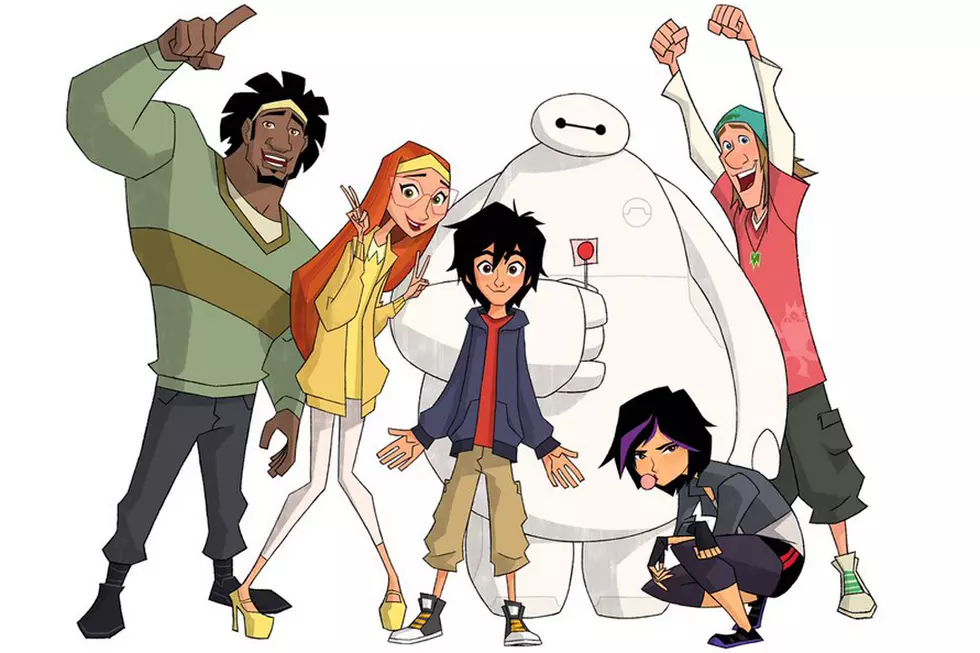
Celebrating The Work And Legacy of Carl Barks, The Good Artist
Comics as a medium has no shortage of good artists; indeed, a major reason for this very series of anniversary posts is to pay tribute to and celebrate the talent and memory of these giants in the field that we love so much. But to those in the know, there's only one man they mean when they say “the Good Artist” with a capital G and a capital A, and that's Carl Barks, Disney's duck man.
In the earliest days of Disney comics, writers and artists worked anonymously, with all stories being signed with Walt's name. But fans could tell a difference in the Donald Duck stories written and drawn by a certain artist — the one who introduced Scrooge McDuck, Magica DeSpell, the Beagle Boys, Gladstone Gander, Gyro Gearloose, and many more — and they would refer to him among themselves as the Good Duck Artist, and would continue to do such even after some enterprising fans uncovered his identity in the late 1950s.
Carl Barks was born March 27, 1901, near Merrill, Oregon, on a farm half a mile away from his nearest neighbor. He would grow up on this farm and several others as his family moved around, trying to eke out a living from stock-breeding, or vegetables, or orchards. It was while at market as a child selling his wares that young Barks was first exposed to the cowboys that would be a recurring motif in his comics adventures.
In 1916, Barks would have to leave school due to a mix of family issues and the hearing problems that plagued him all his life, and he soon began a long string of different jobs, such as farming, woodcutting, mule-driving, and printing. During this time, he would meet a variety of people, many of whom kept good humor despite hard labor, which would influence his approach to character in a major way.
After studying the work of master cartoonists such as Winsor McCay and completing only four lessons from an art correspondence course, Barks began working as a professional artist, eventually selling cartoons to various magazines, including a men's magazine called the Calgary-Eye-Opener. By 1935, however, he had made his way to Disney Studios, where he worked first as an inbetweener and then later as a gag writer, storyman, and story director. Barks would go on to work on dozens of Disney shorts, mostly starring Donald Duck, the character that his name would soon be inextricably linked to.
Barks would quit Disney Studios in 1942 due to health issues and poor working conditions during war time. Fortunately for everyone, however, he inquired about work at Disney's comics division at Western Publishing (aka Dell Comics) and was immediately given an assignment to draw a Donald story for Walt Disney's Comics and Stories. And assignment would follow assignment.
Over the next thirty years, Barks would draw over 500 stories starring Donald and his nephews, as well as their cast of wild supporting characters, many of which would be created by Barks himself, including, of course, Uncle Scrooge. These stories included one-page gag strips, ten-page comedy pieces for Walt Disney's Comics and Stories, and then the ones for which he is perhaps most famous: the full-length adventure stories that appeared first in various one-shot issues of Four Color and then later in Uncle Scrooge's own quarterly series.
These rollicking stories would prove to be incredibly influential. To a certain generation of readers, Barks's stories would be most recognizable as the source and inspiration for the DuckTales cartoon, but they also served to inspire such diverse media as the comics of Osamu Tezuka, the Indiana Jones series of films, and, of course, the work of Barks's greatest successor, Don Rosa. Barks has an asteroid named after him, inspired by his story “Island in the Sky.” The first image ever displayed on a Macintosh computer was a scan of a Barks drawing.
Barks's stories are full of colorful, appealing, and instantly recognizable characters, who feel like a real family: often competitive, frequently petty, but ultimately loving to each other. The plots are exciting and, perhaps more importantly, very funny and character-based. And then there is, of course, the drawing, with expressive figures with dynamic poses and facial expressions over more realistically rendered backgrounds, whether they be a city, a seascape, or a desert vista.
Barks retired in 1966, but he would go on to produce a series of oil paintings based on his Duck comics, many of which would be sold at auction at comic book conventions. He would also script a few more stories in his later years and also contributed a new, watercolor story to Uncle Scrooge McDuck: His Life and Times, a collection of classic Barks Uncle Scrooge stories.
In 1987, Barks was one of the first three artists inducted into the Will Eisner Hall of Fame, together with Jack Kirby and Will Eisner himself, who called Barks “the Hans Christian Andersen of comic books.” Barks passed away in 2000, but it's never too late to educate yourself on his incomparably charming and exciting comics work, thanks to new editions of his comics being published by Fantagraphics.
Happy birthday, Uncle Carl, and thanks for all the ducks.
More From ComicsAlliance









